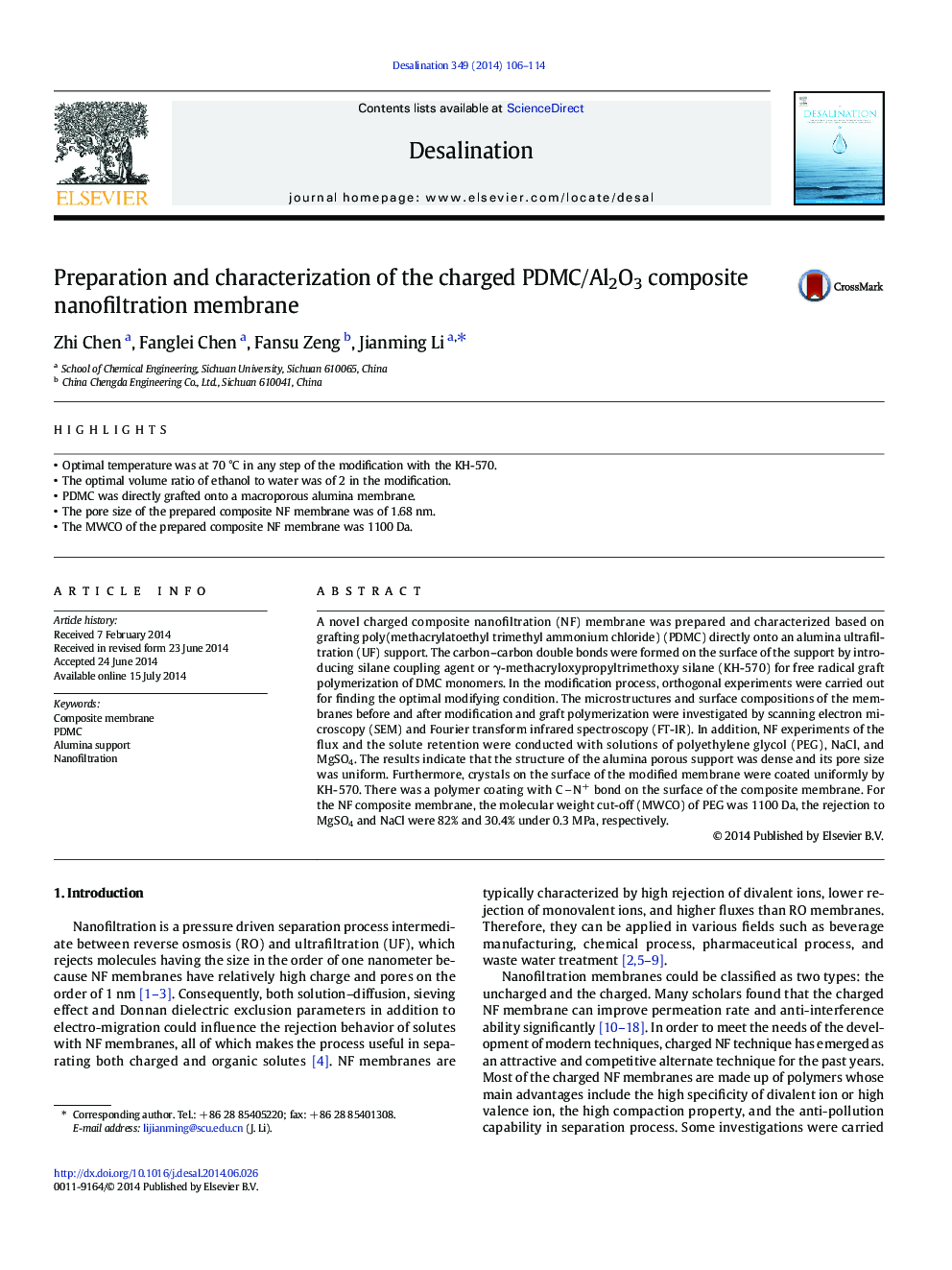| Article ID | Journal | Published Year | Pages | File Type |
|---|---|---|---|---|
| 623442 | Desalination | 2014 | 9 Pages |
Abstract
A novel charged composite nanofiltration (NF) membrane was prepared and characterized based on grafting poly(methacrylatoethyl trimethyl ammonium chloride) (PDMC) directly onto an alumina ultrafiltration (UF) support. The carbon-carbon double bonds were formed on the surface of the support by introducing silane coupling agent or γ-methacryloxypropyltrimethoxy silane (KH-570) for free radical graft polymerization of DMC monomers. In the modification process, orthogonal experiments were carried out for finding the optimal modifying condition. The microstructures and surface compositions of the membranes before and after modification and graft polymerization were investigated by scanning electron microscopy (SEM) and Fourier transform infrared spectroscopy (FT-IR). In addition, NF experiments of the flux and the solute retention were conducted with solutions of polyethylene glycol (PEG), NaCl, and MgSO4. The results indicate that the structure of the alumina porous support was dense and its pore size was uniform. Furthermore, crystals on the surface of the modified membrane were coated uniformly by KH-570. There was a polymer coating with CN+ bond on the surface of the composite membrane. For the NF composite membrane, the molecular weight cut-off (MWCO) of PEG was 1100 Da, the rejection to MgSO4 and NaCl were 82% and 30.4% under 0.3 MPa, respectively.
Related Topics
Physical Sciences and Engineering
Chemical Engineering
Filtration and Separation
Authors
Zhi Chen, Fanglei Chen, Fansu Zeng, Jianming Li,
